The Cross Fork Experience
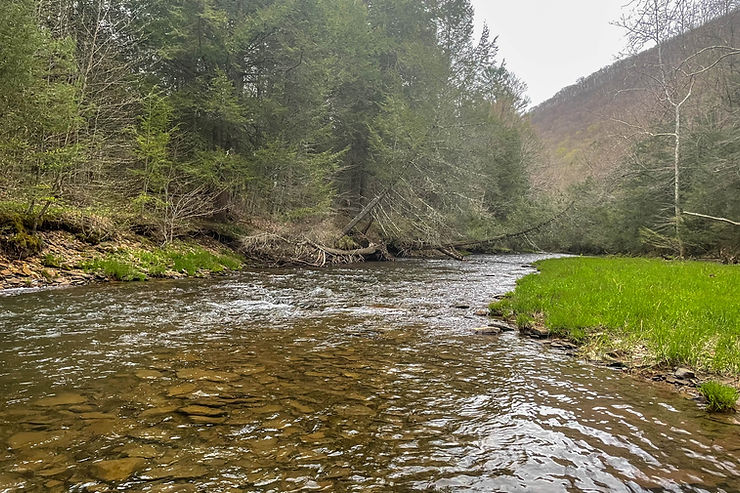
Like many excursions, I ended up on a different stream than I set out for. My target had been Kettle Creek, and I had every intention of giving it a shot, but as I drove down past Ole Bull State Park, and past numerous vehicles squeezed into any and all available parking areas, I got a little discouraged. I don’t mind fishing pressure, and I know there are enough spots and trout for everyone, but I had only a few hours after work and craved a little solitude.
So I found myself turning up the dirt road that parallels Cross Fork to a little parking area where there were only two cars but nobody in sight. Although I’ve fished Kettle Creek numerous times, I’ve never fished Cross Fork. The stream is only about 20-30 feet wide in the lower sections, and as you’re driving through the town of Cross Fork on Route 144, it’s easy to miss if you’re not actually looking for it.
I walked over to a gated bridge and immediately saw fish finning near some structure below and noticed a few splashy rises of native brook trout taking dries. I put on my waders, strung up my rod, and worked around into position across from what appeared to be an 18-inch palomino trout holding in a nice little run. On only my second cast, the line twitched and I set the hook on a nice big…
Sucker?
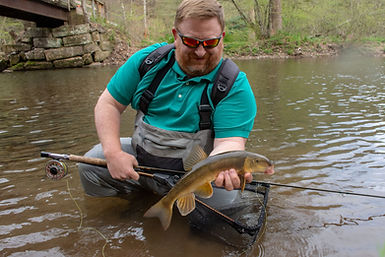
At least, I think it was a sucker. I’m not too good at “trash fish” identification — although I know the appropriate term should be “rough fish” — but it appeared to be a Northern Hogsucker, and I appreciated the fight on a 3-weight fly rod. Northern Hogsuckers aren’t necessarily an undesirable species to have in a stream. Here’s a little bit about the Northern Hogsucker from the PA Fish and Boat Commission website:
“Because they cannot tolerate siltation and move out of water that becomes tainted with pollutants, Hogsuckers are considered indicators of good water quality. They are especially associated with gravelly riffles and adjacent shallow gravel or rubble areas in streams.” (PA Fish and Boat Commission)
It was an interesting way to begin an outing that could only be described later as epic.
Have you ever fished when it seemed like every trout in the stream was actively feeding on whatever was hatching? Bugs were in the air, mainly the spring trio: Blue Quills, Quill Gordons, and Hendricksons. An assortment of caddis fluttered about, too, with a cream-colored caddis being the predominant species.
Trout didn’t want caddis on top, though. They didn’t even want the Blue Quills or the Quill Gordons. Nope. These fish were all about the Hendricksons. After landing the Sucker and then a 6-inch native brookie on a Sexy Walt nymph, I switched over to a size 12 (yes, 12!) Hendrickson and was on my way to one of my best outings of the season.
It wasn’t the best because of the number or size of trout caught. It was the best because of the overall experience. The clear water, the deep forest, the mayflies fluttering about, the solitude, and the exhilaration that comes with discovering a new stream – these are the things that feed my soul.
And there’s something about native brook trout that I deeply admire. They’ve got heart. When they want a fly, they go for it. No holding back. It’s an all-out attack. In fact, some of the little brookies went after the fly so hard that they flew out of the water after it. I know what it’s like to be that hungry!
Of course, that doesn’t mean they were pushovers. A tainted drift produced many refusals. The presentation had to be nearly perfect.
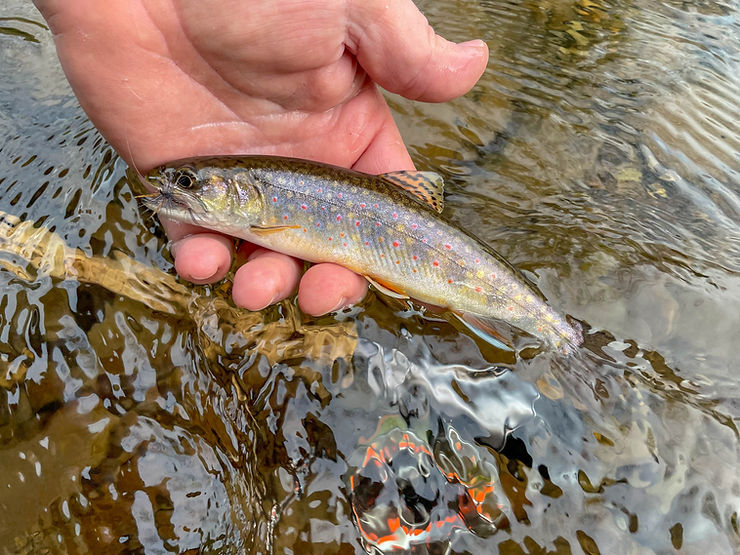
For over 20 years, Cross Fork was designated and managed as “Heritage Trout Waters” and received no additional trout stockings. It had a Class A population of native brook trout and wild brown trout, and I’d always thought of it as one of the premiere streams in Potter County based on reputation alone. Anyone I talked to over the years about Cross Fork always had great things to say about it – its status was legendary among fly fishers.
So what happened to Cross Fork, and why is one section of it now stocked by the PA Fish and Boat Commission? Loss of habitat is the main culprit.
Beginning in the late 1990s, stream surveys started showing signs of a declining native brook trout population. At that point, the stream hadn’t been stocked in 15 years or so, but erosion had destroyed much of the quality habitat and spawning areas brook trout need.
In 2007, the Eastern Brook Trout Joint Venture began work on approximately 3.5 miles of stream, installing log vanes, root wads, log cross vanes, and mud sills in an attempt to stabilize the banks and improve habitat. Evidence of these improvements are everywhere along this stretch. They didn’t just add a couple log vanes and call it a day. No, they put in massive amounts of time and energy in an attempt to restore Cross Fork to its former greatness.
And it’s working. Like most good things, it hasn’t happened overnight, and the fruits of labor won’t be fully realized for several more years. But in time, Cross Fork will regain the status it once held, and I believe its entire length will someday re-claim that Class A status.
The upper three sections of Cross Fork are still managed as Class A wild trout waters, and almost all of it flows through public land. You can hike for miles up through deep forest in search of native brook trout.
Section 4 of the stream is deemed Catch & Release, Artificial Lures Only, beginning at the confluence with Windfall Run and stretching down to 400 M downstream of the T416 Bridge/Weed Property. This is the section that I fished that evening, and the scenery throughout is stunning.
I picked up a handful of natives on the Hendrickson and worked down around the bend to where some stream improvement had been done several years ago. Logs had been used to stabilize the bank and had created a very nice fast riffle. I plucked two brookies out of there before moving down to the tail end where it emptied into a nice little pool beneath an overhanging tree. I floated my dry fly down underneath it and the take was soft, unlike that of the smaller brookies I’d landed thus far. This was the slow and confident take of a larger fish, and I saw its nose break water and my Hendrickson go right into its mouth.
I lifted the rod and for about 3 seconds had on a lunker of a native brook trout. A solid 10-incher with an orange belly! And then he was gone, out of my life forever.
For the next hour or so, I worked downstream, dropping my Hendrickson through every riffle and run I came to, and typically landed a native brookie or two from each pool. Most of them were very nice fish in the 6-7-inch range with the longest around 10-inches. In the world of brook trout, these were solid fish!
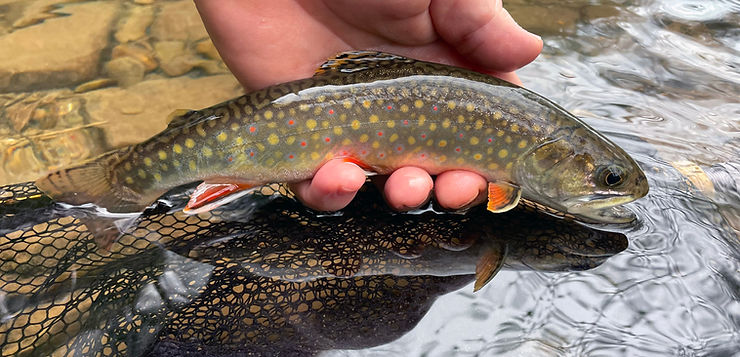
After a while, I turned around and worked back toward the truck, hitting a few pools a second time. Oddly enough, this is when I started picking up stocked rainbow trout. One here, one there, each coming up for the Hendrickson. I landed 6 or 7 of them by the time I got back to where I’d parked.
With a little daylight left, I headed upstream to check out what appeared to be a nice pool on the bend.
I eased toward the pool slowly, working the tail end and slack water near shore before moving in for the kill. This is something that I’ve consciously changed about my fishing habits this year. In years past, I’d have identified the best water and put my first drift through there – and yes, more likely than not, it would produce a fish.
This year, though, I’ve been more patient with how I approach pools, and I’ve been pleasantly surprised at the number of fish I pick up out of the “sub-prime” holding water. In fact, it’s amazing how many trout hold in water barely deep enough to cover their backs. Equally interesting is the number of fish that will stage in the deeper water just off the shallow edge and yet pounce on any fly that lands in the water only a couple of inches deep. This is especially true with native and wild trout, which are more opportunistic and aggressive with their feeding habits.
I’ve caught way more fish this year by slowly working into pools and great-looking lies. In essence, I’m picking off the “gimmes” and quickly playing them out of the pool before their thrashing spooks other fish.
In this particular pool, I plucked 2 native brookies and 4 stocked rainbows from the tail end and shallow side before even getting to the best holding water, which also produced several more fish, including a beautiful wild brown. It was the perfect ending to what just might be the best three hours I’ve spent on a trout stream so far this year.
_______________________________
Questions or comments? Feel free to leave your thoughts below.
Sign up for the Dark Skies Fly Fishing e-newsletter
It's free, delivered to your inbox approximately three times each month.
Sign Up Now
Great article on Cross Fork Creek. I fish little Kettle and Big Kettle all the time but never managed to hit Cross Fork Creek. Its hard to leave fish to find fish but this article has changed my mind. I will be venturing out this year to fish Cross Fork. I love fishing for wild brooks and the Kettle Creek Valley is loaded with them.
Thanks
Best of luck on the water, Scott! More than fish, I hope you find wilderness and joy as you explore new places in this region!
Ralph